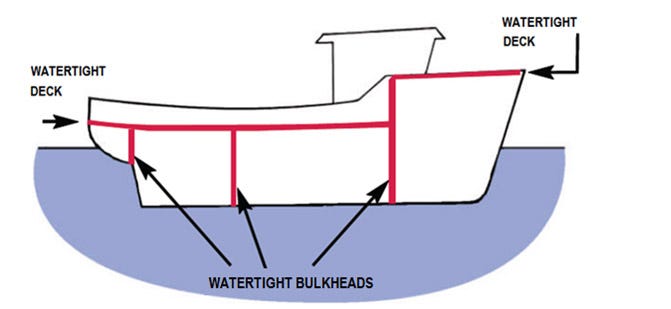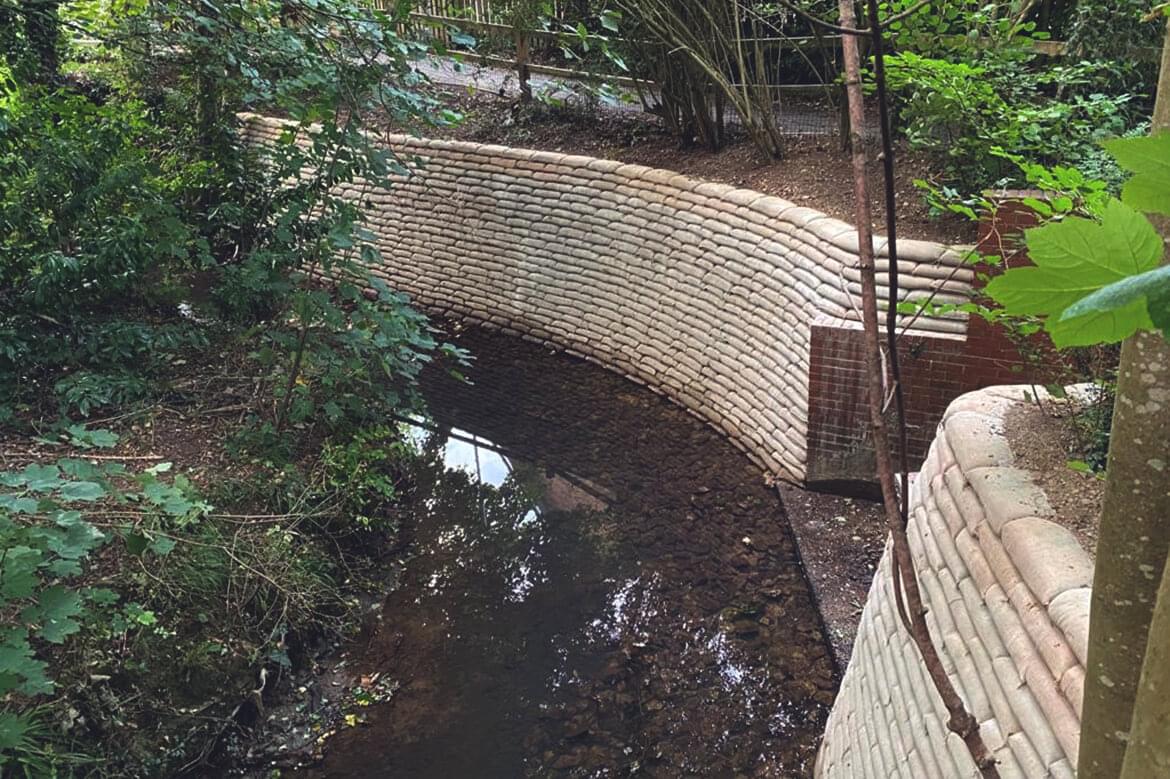Bulkhead on Lake Livingston and Its Contribution to Sustainable Practices
Checking Out the Various Uses Bulkhead Frameworks in Modern Architecture
Bulkhead structures play a substantial function in modern-day style, serving both visual and functional objectives. They can specify rooms, boost storage space services, and enhance lights. In commercial setups, they act as prime focus that show brand name identity - Bulkhead on Lake Livingston. Furthermore, their integration frequently sustains sound management and lasting methods. Comprehending the full range of their applications reveals much regarding modern style trends and customer experience. What innovative uses of bulkheads might arise in the future?
Specifying Bulkhead Frameworks
Bulkhead structures play a crucial duty in modern architecture, functioning as vital elements in numerous building styles. These frameworks are usually specified as raised platforms or ceilings, commonly utilized to hide mechanical systems, circuitry, or plumbing. Bulkheads can be located in both residential and commercial settings, where they offer a smooth mix of performance and aesthetic appeals. Their design can integrate lights components and various other ornamental elements, enhancing the overall visual charm of an area.
Usually constructed from products such as drywall, steel, or wood, bulkheads can be customized to fit the building style and demands of the building (Bulkhead on Lake Livingston). They serve not just to conceal unattractive facilities yet additionally to produce defined areas within open rooms. By managing the flow of a room, bulkheads add to the spatial company, making them a significant element of contemporary building practice. Their interpretation encapsulates both aesthetic and functional dimensions.
Practical Applications in Residential Design
Bulkhead structures play an essential function in residential style by helping with space optimization strategies that make the most of functional locations. They add aesthetic layout components that boost the visual allure of living areas. Additionally, these frameworks offer important architectural assistance options, making certain the honesty and safety and security of the home.
Room Optimization Approaches
As modern residential designs increasingly prioritize efficient use area, innovative strategies emerge to take full advantage of functionality without sacrificing aesthetic appeals. One noticeable strategy involves the combination of bulkhead frameworks, which can mark areas while providing essential storage space services. These frameworks can be used to produce upright storage units that enhance both company and accessibility. Additionally, multi-functional furniture, such as foldable tables and exchangeable couches, enhances bulkhead styles, enabling areas to adjust to varying needs. Open up floor strategies better maximize spatial flow, encouraging flexibility in operation. Including built-in shelving and recessed lights within bulkheads also adds to a structured atmosphere, ensuring that fully of room is utilized successfully and sympathetically within the general layout.
Visual Design Components

Structural Assistance Solutions
In modern household style, an efficient structural support solution is crucial for preserving the honesty of spaces while optimizing layout and performance. Bulkhead structures play a considerable role in this situation, functioning as both support and partitioning components. They can hide mechanical systems, such as pipes and electric wiring, while giving reinforcement to the ceiling and floor systems. By purposefully putting bulkheads, designers can create defined areas within open floor plans, improving use without compromising architectural stability. Furthermore, these frameworks can fit lights components, adding to both looks and functionality. To summarize, bulkhead structures are crucial in household layout, offering versatile support solutions that enhance both the functionality and aesthetic charm of living areas.
Enhancing Visual Appeals in Commercial Areas
When industrial spaces embrace innovative bulkhead frameworks, they not only specify physical boundaries yet also significantly improve the overall appearances of the atmosphere. These building aspects work as visual prime focus, drawing focus and creating a sense of intrigue. By incorporating diverse materials such as glass, timber, or metal, bulkheads can show a brand's identification and mission, adding to a natural design.
Moreover, the critical placement of bulkheads can manipulate light and darkness, adding deepness and dimension to or else flat rooms. This interaction can change a commercial location right into a welcoming environment, urging consumer interaction. Additionally, the use of color and appearance in bulkhead style can evoke certain feelings, improving the general customer experience. Eventually, the thoughtful assimilation of bulkhead structures boosts the aesthetic charm of business spaces, making them not only useful however additionally visually captivating, consequently promoting a long-term impact on visitors.
Acoustic Performance and Noise Monitoring
Efficient acoustic performance plays an essential role in modern-day architecture, specifically within business spaces where audio monitoring is essential. Bulkhead structures can substantially enhance acoustic qualities by taking in noise, minimizing echo, and mitigating sound transfer in between locations. These features are especially helpful in environments such as theaters, restaurants, and offices, where clear communication and a pleasant acoustic experience are extremely important.
The tactical placement and design of bulkheads can help develop sound-buffer areas, properly separating noisy areas from quieter ones. Materials utilized in bulkhead building, such as acoustic panels and soft coatings, add to their sound-dampening abilities. Additionally, the incorporation of bulkheads enables the combination of sound-absorbing components without jeopardizing visual appeal. By attending to acoustic efficiency, engineers can produce harmonious settings that enhance comfort, improve user experience, and advertise performance, making bulkheads an essential component in the design of contemporary business areas.
Integrating Bulkheads for Efficient Room Application
Although often overlooked, the assimilation of bulkheads in architectural style can considerably enhance area utilization in modern-day structures. These architectural components serve several practical functions, providing a method to conceal mechanical systems, electric circuitry, and pipes without jeopardizing visual appeals. By tactically positioning bulkheads, engineers can create defined locations within open layout, thereby facilitating much better organization and flow.
Additionally, bulkheads can integrate storage space solutions and illumination functions, optimizing the performance of or else wasted vertical area. In residential setups, they may define zones such as kitchens or living areas, while in business areas, they can improve the performance of formats by plainly marking pathways and workspace.
Inevitably, the thoughtful integration of bulkheads adds to an extra well organized and visually enticing environment, permitting adaptable areas that can advance with the demands of their owners. This strategy not only maximizes space however More hints likewise fosters a much more unified communication in between kind and feature.
Bulkheads in Public Design

Building Visual Enhancements
While numerous building components go for capability, bulkheads in public architecture offer a double objective by boosting aesthetic appeal. These frameworks commonly create aesthetic passion with their design, integrating seamlessly with surrounding aspects. By employing various materials, structures, and colors, bulkheads can add to a special identification for public areas, such as flight terminals, museums, and libraries. Their tactical placement aids to delineate areas, directing visitors while adding deepness to the general layout. In addition, bulkheads can accentuate illumination, creating vibrant atmospheres that transform throughout the day. This visual enhancement not just boosts the site visitor experience but also fosters a local color, making bulkheads an important consideration in contemporary public design. Generally, bulkheads embody the blend of form and function.

Architectural Support Solutions
As engineers seek innovative means to enhance the structural stability of public rooms, bulkheads emerge as vital parts in the design and construction process. These structures supply crucial assistance, specifically in locations based on heavy foot web traffic or dynamic lots. By distributing weight equally, bulkheads help prevent structural failure while permitting versatile style alternatives. In big venues, such as stadiums and convention centers, bulkheads are often incorporated into the overall architectural framework, guaranteeing stability and safety. Furthermore, they can assist in the consolidation of utilities and mechanical systems, contributing to the performance of area use. Eventually, bulkheads stand for a vital option in modern public architecture, strengthening both capability and protection in community-focused atmospheres.
Environmental Defense Procedures
Integrating environmental defense steps into public style has actually become significantly crucial as metropolitan developers prioritize sustainability along with architectural assistance. Bulkhead frameworks offer a double objective hereof, functioning as obstacles against erosion and flooding while simultaneously improving the visual allure of urban landscapes. Their layout commonly consists of all-natural elements such as plants, which can improve air quality and give environments for wildlife. In addition, bulkheads can be crafted with absorptive materials that enable water absorption, minimizing runoff and promoting groundwater recharge. This assimilation of environmental considerations not just protects the environment however also fosters area durability versus environment change. By utilizing bulkheads successfully, engineers add to sustainable metropolitan advancement that lines up with modern environmental Learn More Here goals.
Future Patterns in Bulkhead Style
Emerging fads in bulkhead layout mirror an expanding emphasis on sustainability, technology, and performance in modern-day design. Designers are increasingly including environment-friendly products, such as recycled composites and bioplastics, to reduce environmental influence. On top of that, the combination of wise modern technology is becoming widespread, allowing bulkheads to serve multi-functional functions, consisting of power storage space and environment control.
In urban setups, modular bulkhead systems are getting traction, supplying adaptability in style and ease of installation. These systems can be adapted to different landscapes, allowing for efficient area application. In addition, visual factors to consider are progressing; bulkheads are now being made to improve visual charm, commonly integrating imaginative aspects that resonate with regional culture.
As climate durability comes to be a concern, future bulkhead layouts will likely prioritize flooding protection and stormwater administration, making certain structural integrity while attending to ecological challenges. This change indicates an alternative method to design that meets both ecological duties and human requirements.
Often Asked Questions
What Products Are Generally Used for Bulkhead Construction?
Common products for bulkhead building and construction include concrete, steel, timber, and composite materials. These alternatives give resilience, structural honesty, and resistance to environmental elements, making them ideal for different applications in building and construction and design tasks.
Just How Do Bulkheads Affect Structure Energy Performance?
Bulkheads enhance developing energy check this performance by supplying thermal insulation and lowering air leak (Bulkhead on Lake Livingston). They assist preserve indoor temperatures, thereby reducing heating and cooling down demands, inevitably bring about lower energy expenses and improved environmental sustainability
Are There Any Building Regulations Specific to Bulkhead Frameworks?
Yes, constructing codes details to bulkhead frameworks exist, differing by place. These regulations commonly address safety and security, architectural stability, and availability, making sure that bulkheads satisfy required criteria for building and construction and style within a provided territory.
Can Bulkheads Be Easily Changed or Gotten Rid Of Later On?
Bulkheads can usually be customized or removed, depending upon their design and building and construction. Nonetheless, such modifications may need cautious planning and adherence to building codes to guarantee structural integrity and safety and security are maintained throughout the procedure.
What Are the Prices Associated With Installing Bulkhead Structures?
The costs associated with installing bulkhead structures can differ significantly, commonly affected by materials, layout intricacy, and labor. Typically, costs range from modest to high, depending on the project's details requirements and location.
Bulkhead frameworks play a critical role in modern-day architecture, offering as necessary parts in different structure layouts. Bulkhead frameworks play an essential function in household layout by assisting in space optimization methods that maximize usable locations. Usually ignored, the assimilation of bulkheads in building layout can substantially boost room use in modern buildings. As architects seek innovative means to boost the architectural integrity of public spaces, bulkheads arise as necessary components in the design and construction process. The prices linked with setting up bulkhead frameworks can vary significantly, typically influenced by products, layout complexity, and labor.